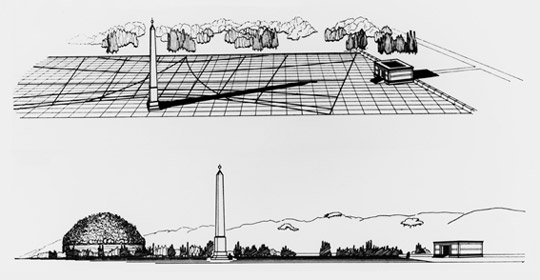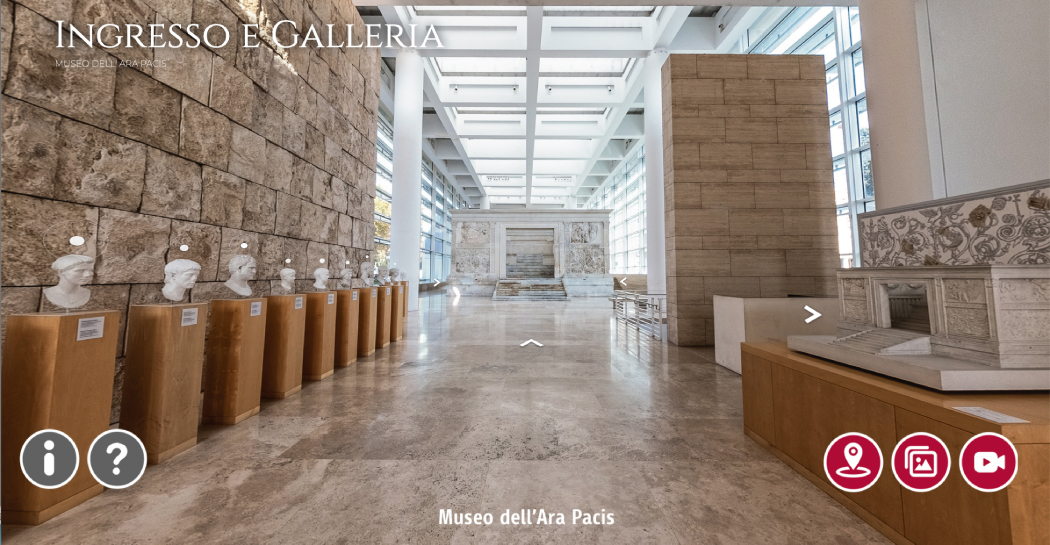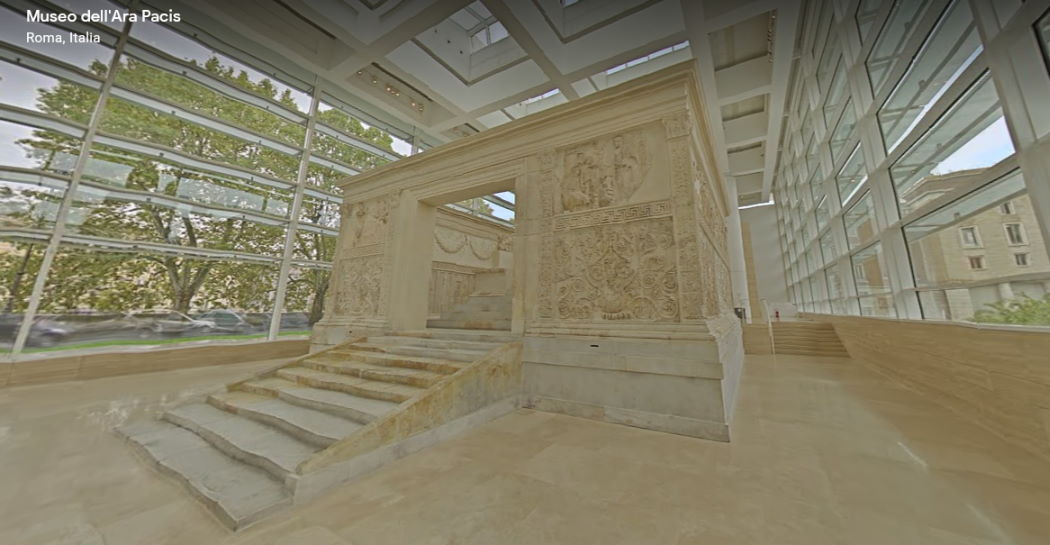The Ara Pacis in the Field of Mars
The Altar was constructed, by Augustus' own decision, in the northern part of the Field of Mars, in a zone near to the sacred confines of the city (the pomerium), where fifteen years earlier Octavian had wanted to build his Mausoleum, a dynastic tomb. Now, with the title of Augustus, he hastened to construct, at the same time as the Ara Pacis, a huge solar clock, which was to take its name from him, and be called the Sundial of Augustus.

Strabo, a greek writer, has left us an admiring account of Augustan Rome, which in those days extended between the Via Lata, now the Via del Corso, and the sweeping curve of Tiber. After describing the verdant plain, shaded by sacred groves, and the porticoes, circuses, gymnasia, theatres and temples, which were being built there, Strabo goes on to talk about the sacred area of the northern part of the Field of Mars, sacred precisely because of the existence of the Mausoleum and the ustrinum, in which, in 14 A.D. Augustus' mortal remains were burnt. Between the Mausoleum and the ustrinum there was a sacred grove, full of charming walks. To the south-east, about 300 metres distant from the Mausoleum, rose the Sundial and the Ara Pacis - themselves in fact not described by Strabo - which delimited the area of the plain given over to Augustus' memory.
The ideological urban planning used in the northern part of the Field of Mars only lasted for a short time and within a few decades the integrity of the Sundial was compromised. The level of the land rose relentlessly throughout the area, largely due to the inundations of the Tiber; there were efforts to protect the Ara Pacis by building a wall to halt the process by which the ground level was rising, but obviously these precautions were ineffective in the face of the continual filling in of the entire area. The destiny of the Ara Pacis was therefore sealed and its obliteration irreversible.
For more than a millennium silence fell on the Ara Pacis, and the monument was lost even to memory.







































